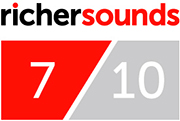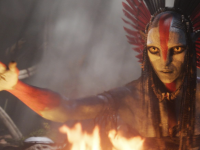
A jazz legend weighed-down by his musical legacy battles addiction and illness while striving to find a new voice. Spurning the ‘cool jazz’ and ‘modal jazz’ he created, Miles Davis tries to shed the ‘jazz’ label altogether and create a new ‘social music’.
By the mid-seventies, Miles Davis had become nothing less than an iconic figure. From his earliest work with Charlie Parker and Coleman Hawkins, his collaborations for the next thirty years would read like a “Who’s Who” of jazz. His 1959 album Kind of Blue is a landmark in the history of jazz recording. A decade later the double album Bitches Brew was released. By now Davis’ output had become more experimental, featuring electric instruments and more of a ‘rock’ influence. Despite a mixed reception, this album was a huge seller. Davis continued to push the boundaries of jazz at this time and helped forge a style of music that would come to be known as ‘jazz fusion’.
The wheels came off in 1975. Davis was already suffering from osteoarthritis and depression among other things. However, it was a renewed addiction to alcohol and cocaine that finally forced him to retreat from the public eye for the best part of six years. Miles Ahead is a fictionalised dramatisation of this career hiatus.
 The film opens with Miles Davis (Don Cheadle) being interviewed by fictional music journalist Dave Brill (Ewan McGregor). Davis is finally back in the studio with new music and appears to have overcome his demons. From then on the story largely unfolds in flashback. The form of the movie is episodic, jumping backwards and forwards. It is a kaleidoscope of cut-scenes from Davis’ self-obsessed game of life.
The film opens with Miles Davis (Don Cheadle) being interviewed by fictional music journalist Dave Brill (Ewan McGregor). Davis is finally back in the studio with new music and appears to have overcome his demons. From then on the story largely unfolds in flashback. The form of the movie is episodic, jumping backwards and forwards. It is a kaleidoscope of cut-scenes from Davis’ self-obsessed game of life.
Dave Brill first bangs on the door of Davis’ apartment insisting that an interview has been set up by his record label with Rolling Stone magazine. From this initial foot-in-the-door to Davis’ life, an on-off, buddy-buddy relationship develops between the two which becomes the primary focus of the film. Their madcap adventures involve extorting cocaine, retrieving a stolen session tape, punch-ups, and a car chase. Back home we were watching The Sweeney and Starsky and Hutch. Here rival artist manager Harper Hamilton (Michael Stuhlbarg) refers to our dynamic duo as “the flunky and the junkie”. Davis, now sporting bright silk shirts and more bling than would be allowed through airport security, runs red lights and sends trash cans tumbling like ten pins to a funkadelic soundtrack.
The film dwells too much on Davis’ relationship with the love of his life, Frances Taylor (Emayatzy Corinealdi). She was a singer, but Davis forced her to give this up to be at home. Davis is devoted to Frances but he is an over possessive, cloying, then sometimes distant partner. Ultimately his artistic frustrations manifest through domestic violence. Each of their scenes together adds little to the previous one. The film would have been better balanced if more time had been spent on the specifics of Davis’ musical journey.
While obviously a reactionary in relationships, Davis wanted to be a revolutionary in music. In the film, he cites the great revolutionaries such as Ravel, Stravinsky and Chopin. Unfortunately, none of this is explored and we are left with a few sound bites during an interview.
The majority of the music used in the film is original Miles Davis recordings. Don Cheadle mimes expertly to this soundtrack. The extra trumpet lines were supplied by New York based session player Keyon Harrold. The Miles Ahead movie soundtrack, which is available as a CD and digital download, features a string of Davis’ hits. To be fair, these are expertly integrated into the story. However, I would suggest picking up a few of the original albums as a more worthy introduction to his music. Try the two albums I mentioned earlier, and also Tutu from 1986.
Don Cheadle is the director, producer, co-writer, and star of this film. From the opening scene it is obvious that he has given everything to this project. You feel immediately that you are watching the real Miles Davis. It is a superb performance full of energy, angst, and subtlety. I really enjoyed Ewan McGregor’s hustling journalist. The lighter moments of the film are in his capable hands. However, the script was a tad clichéd at times and did not really develop the supporting characters.
This film does however exude the mid-seventies. The costumes, sets, props and music are bang on. Don Cheadle chose to film the entire movie in Cincinnati, Ohio as he believed that the architecture closely resembled that of New York City at the time.
You would expect any biopic to use artistic licence to make the film more entertaining. However, this is Miles Davis we’re talking about and not Eddie “The Eagle” Edwards. Ultimately there was just too much of this film that probably never happened to make it a worthwhile tribute to the man and his work. However, Don Cheadle should be extremely proud of what he has achieved here, particularly his own performance. He was great, but this film is just good.

Author: Simon, Norwich store





